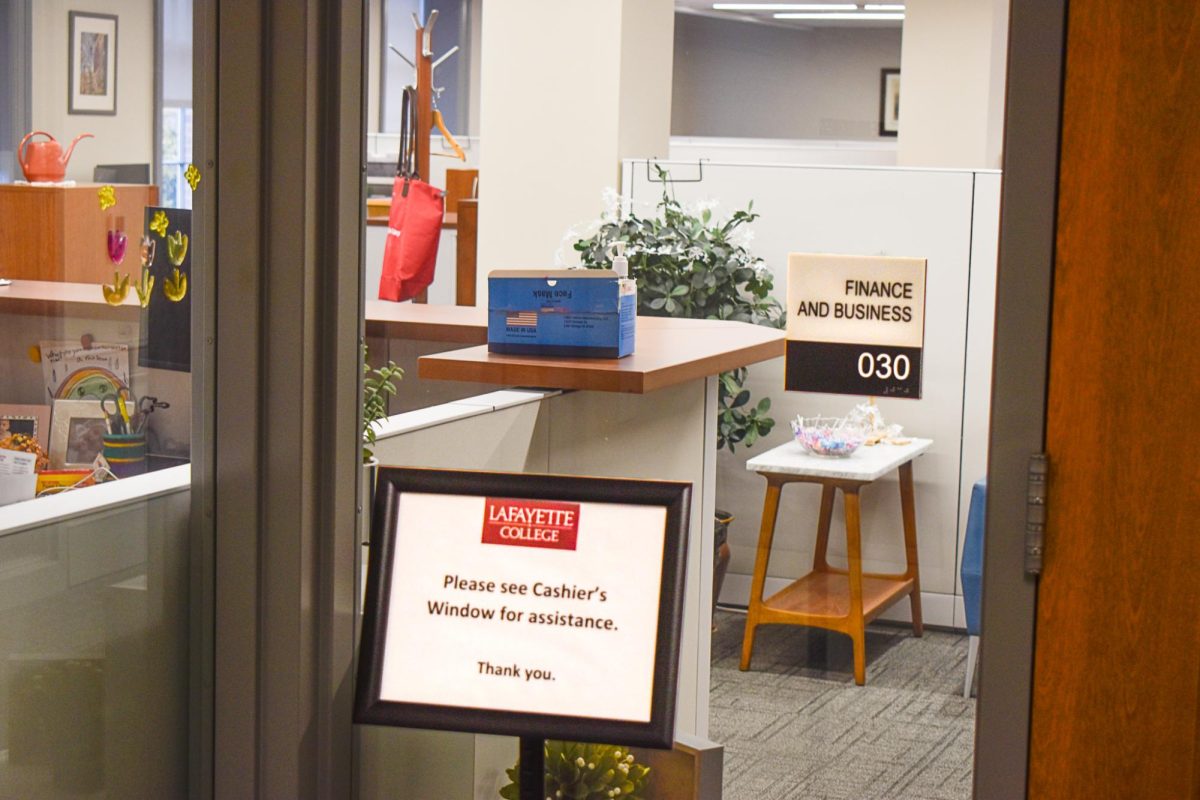“Melting Mildred wants to know where the money is going,” reads a fiery display in front of Farinon College Center, surrounded by printed screenshots of anonymous YikYak posts complaining about the college. It’s certainly a burning question (get it?).
The total cost of attendance per student for 2023-2024 was $80,864. Where exactly does all that money end up?
No need to go down the rabbit hole of lafayette.edu for this information. With the help of Holly Lantos, assistant vice president for budget and analytics, and James DeVault, professor of economics and member of the college’s budget committee, The Lafayette is providing you, dear student, with all the information you need to know about where Lafayette gets its money and how it spends it.
The 2024 fiscal operating budget, aka how much money the college plans to spend in the year, is $191 million, according to Lantos.
Here’s the breakdown of the $191 million:
Revenue
The 2024 operating expense budget is equivalent to the revenue generated: $191 million.
There are five main sources of revenue for the college: net tuition, auxiliary, endowment, gifts and grants and “other.”
Net tuition, according to Lantos, is gross tuition: total tuition, minus scholarships and financial aid applied. Net tuition accounts for 50 percent of revenue. Next is auxiliary, which is 22 percent of the revenue. These are housing and dining expenses, separate from tuition, but included in the cost of attendance.
Then there’s the college’s endowment, making up 22 percent of revenue. A point of pride for Lafayette is its over $1 billion endowment, but what does that mean?
A college’s endowment “is essentially a pile of financial assets,” DeVault said. These assets can be stocks, bonds, come from donors, etc., according to the professor, and there’s a limit on how much endowment you can spend. Legally, that varies per state.
As of 2020, nonprofit organizations, such as colleges and universities, can only use up to 10 percent of their endowment in Pennsylvania. For Lafayette, that’s about $100 million that it’s legally allowed to spend, but, that doesn’t mean all of it will be used.
According to DeVault, “you want to spend the interest, but not the principle” of the endowment to continue to build it up over time while a small percentage of it is used.
It’s ultimately a fail-safe for the institution “if everything goes to hell,” he said. But, Lafayette is nowhere near that point, and its endowment contributes greatly to its revenue.
“Lafayette is really, really lucky to have a billion dollar endowment, because it kicks off basically $40 million every year that students don’t have to pay,” DeVault said. “If we didn’t have the endowment, you folks would have to spend 22 percent more to come here.”
Finally, gifts and grants comprise three percent, and “other” two percent of the revenue.

Operating Expense Budget
So now that we know from where Lafayette gets its money, what does it spend it on exactly?
Something important to note is that, according to Lantos, there is no “direct line” from one source of revenue to a portion of the operating budget. For example, auxiliary – housing and dining costs – do not directly fund dorm maintenance and staff wages, as costs change over time.
“We look at everything collectively,” Lantos said.
The budget is split into compensation, operating expenses, interest, capital support and contingency.
The biggest chunk of the budget is taken up by compensation at 55 percent, which is comprised of faculty, staff, administration and other college employee wages, salaries and benefits, according to DeVault.
Operating expenses, at 30 percent, are essentially the costs for what it takes to run a large-scale institution on a daily basis.
Seven percent of the budget is used to pay for outstanding interest expenses. Capital support takes up six percent of the budget and contingency takes up two percent.
Capital support is “support for larger projects that steward or improve the campus” and contingency is for “flexibility in the budget to handle some volatility or unforeseen circumstances during the course of the year,” Lantos wrote in an email.
So, there you have it! You understand a little bit more about how the college you attend works: where its money comes from and where it goes. Lafayette requires a great sum to operate and support its students, faculty and staff, but according to DeVault, it’s in good hands.
“I have a lot of confidence in our finance team,” DeVault said. “I think that should be comforting for students … it’s not perfect, but I think by and large the college does a pretty good job.”




































































































